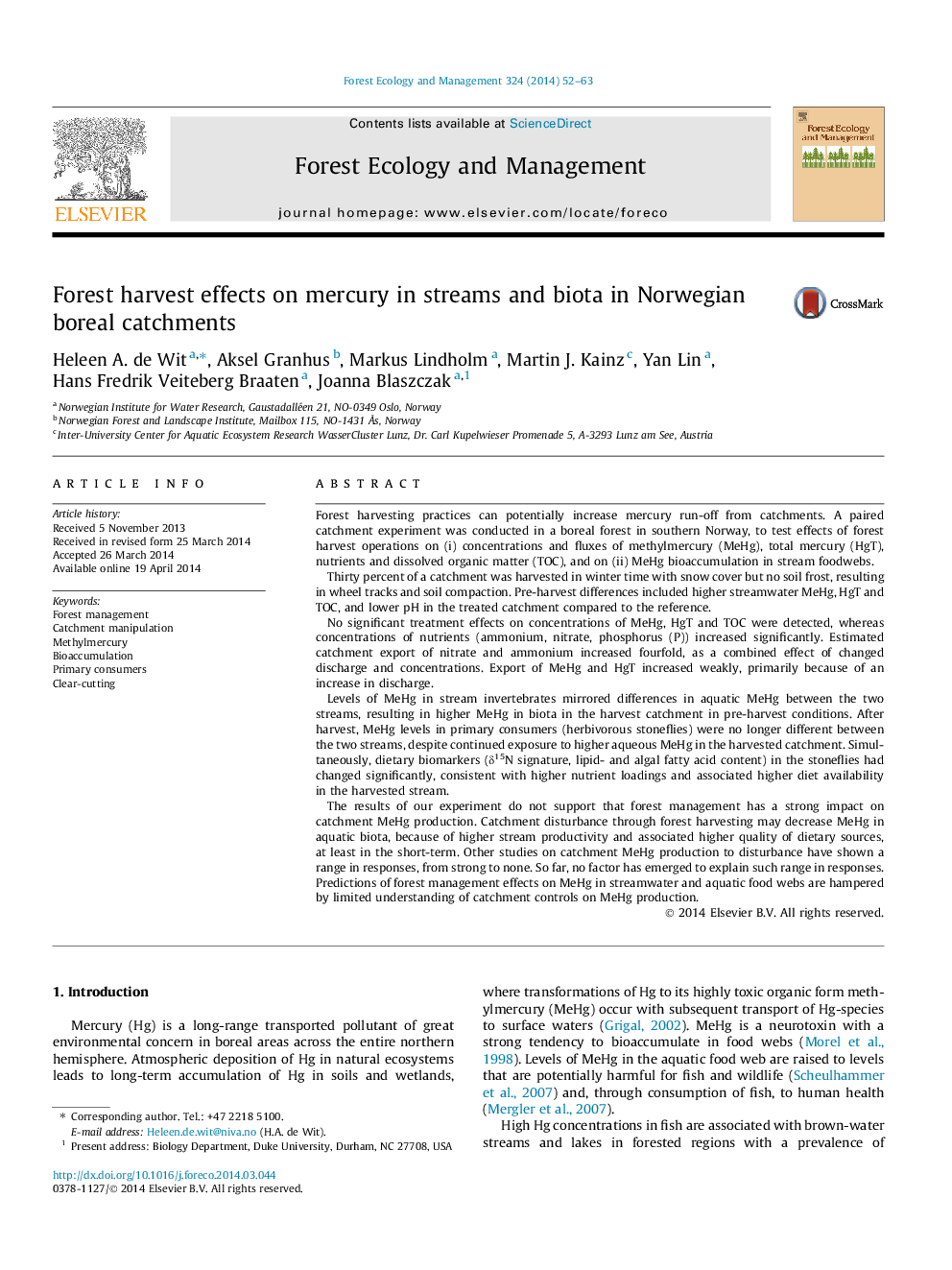| کد مقاله | کد نشریه | سال انتشار | مقاله انگلیسی | نسخه تمام متن |
|---|---|---|---|---|
| 86624 | 159200 | 2014 | 12 صفحه PDF | دانلود رایگان |
• Forest harvest may increase MeHg in streamwaters and aquatic food chain.
• Streamwater chemistry and MeHg in biota were studied in a paired-catchment design.
• Concentrations of nutrients increased but not streamwater MeHg and total Hg.
• MeHg in invertebrates was reduced after harvest related to improved nutrient access.
Forest harvesting practices can potentially increase mercury run-off from catchments. A paired catchment experiment was conducted in a boreal forest in southern Norway, to test effects of forest harvest operations on (i) concentrations and fluxes of methylmercury (MeHg), total mercury (HgT), nutrients and dissolved organic matter (TOC), and on (ii) MeHg bioaccumulation in stream foodwebs.Thirty percent of a catchment was harvested in winter time with snow cover but no soil frost, resulting in wheel tracks and soil compaction. Pre-harvest differences included higher streamwater MeHg, HgT and TOC, and lower pH in the treated catchment compared to the reference.No significant treatment effects on concentrations of MeHg, HgT and TOC were detected, whereas concentrations of nutrients (ammonium, nitrate, phosphorus (P)) increased significantly. Estimated catchment export of nitrate and ammonium increased fourfold, as a combined effect of changed discharge and concentrations. Export of MeHg and HgT increased weakly, primarily because of an increase in discharge.Levels of MeHg in stream invertebrates mirrored differences in aquatic MeHg between the two streams, resulting in higher MeHg in biota in the harvest catchment in pre-harvest conditions. After harvest, MeHg levels in primary consumers (herbivorous stoneflies) were no longer different between the two streams, despite continued exposure to higher aqueous MeHg in the harvested catchment. Simultaneously, dietary biomarkers (δ15N signature, lipid- and algal fatty acid content) in the stoneflies had changed significantly, consistent with higher nutrient loadings and associated higher diet availability in the harvested stream.The results of our experiment do not support that forest management has a strong impact on catchment MeHg production. Catchment disturbance through forest harvesting may decrease MeHg in aquatic biota, because of higher stream productivity and associated higher quality of dietary sources, at least in the short-term. Other studies on catchment MeHg production to disturbance have shown a range in responses, from strong to none. So far, no factor has emerged to explain such range in responses. Predictions of forest management effects on MeHg in streamwater and aquatic food webs are hampered by limited understanding of catchment controls on MeHg production.
Journal: Forest Ecology and Management - Volume 324, 15 July 2014, Pages 52–63
